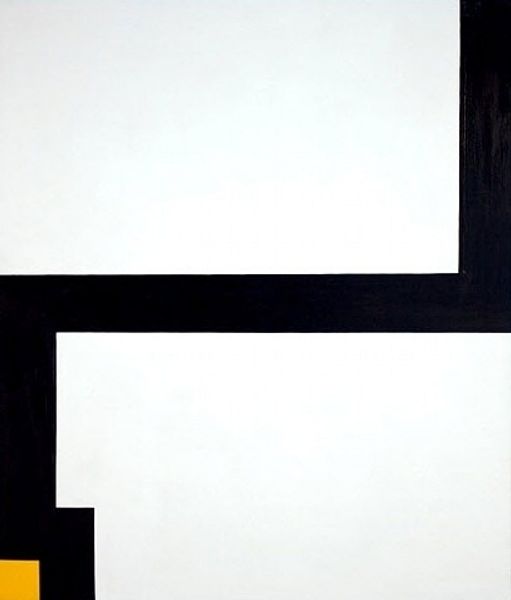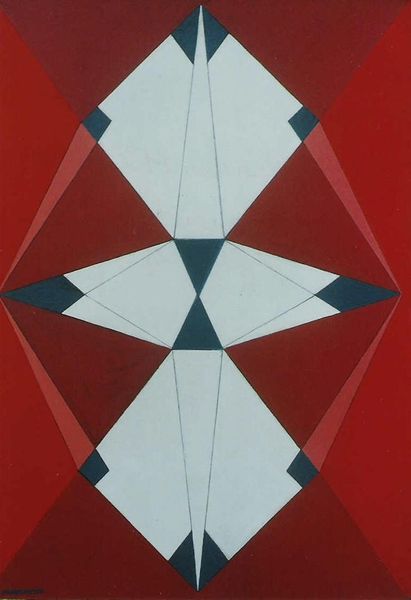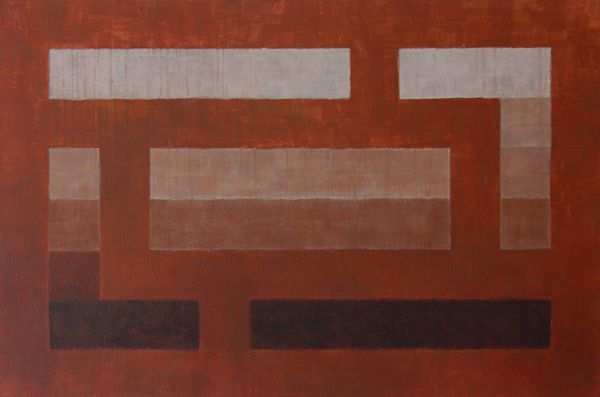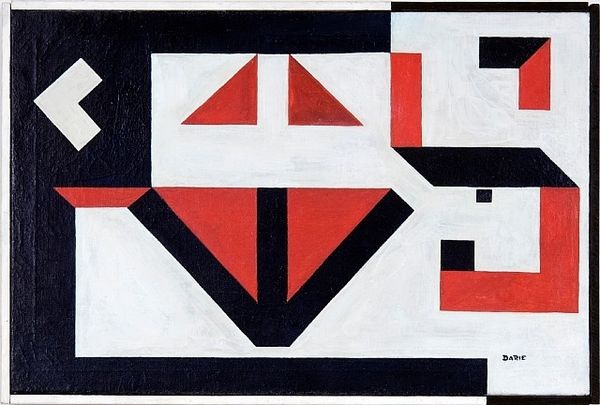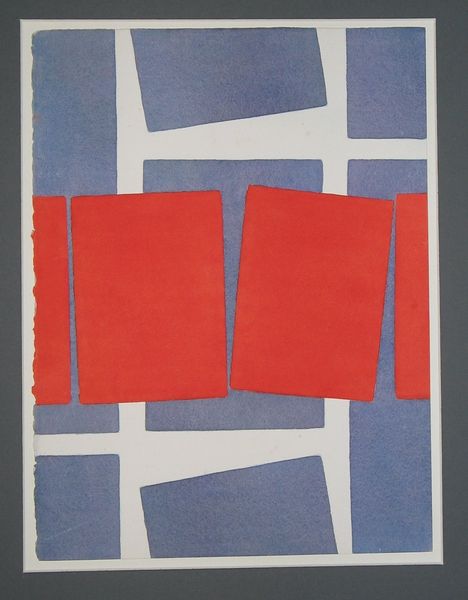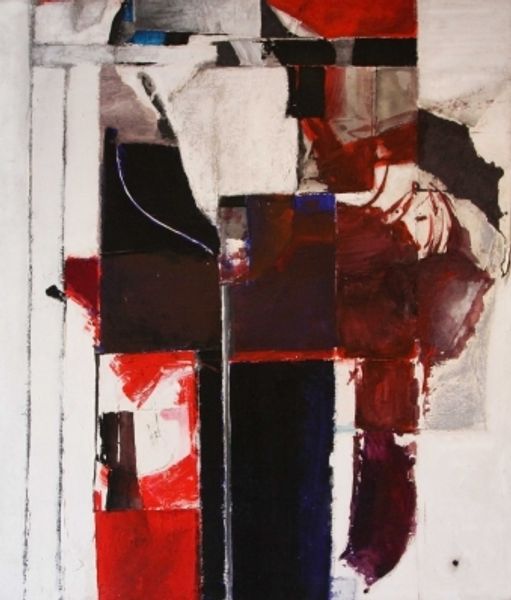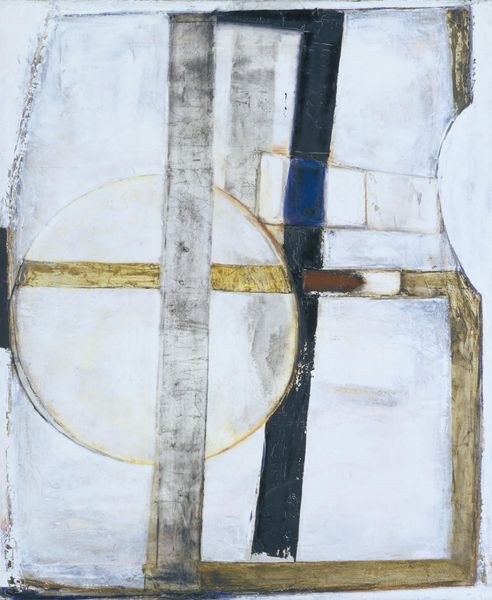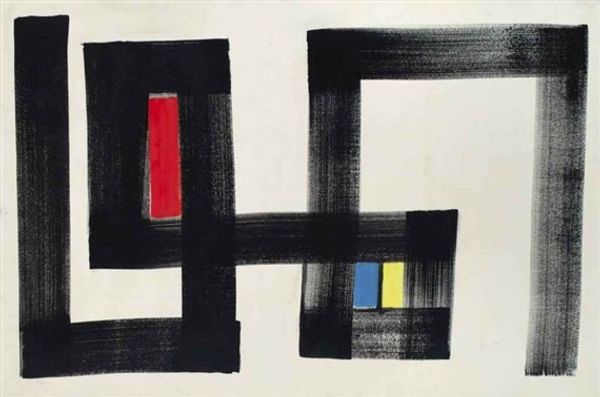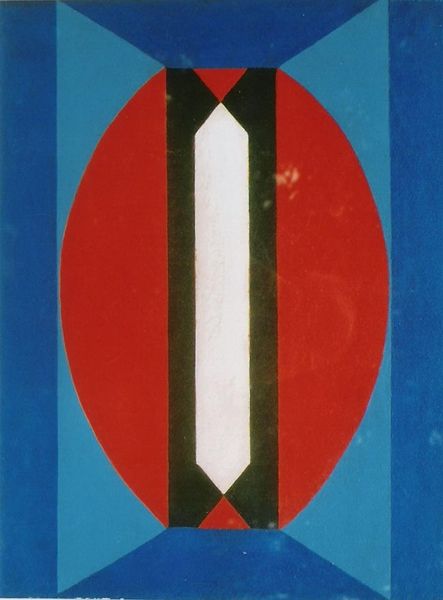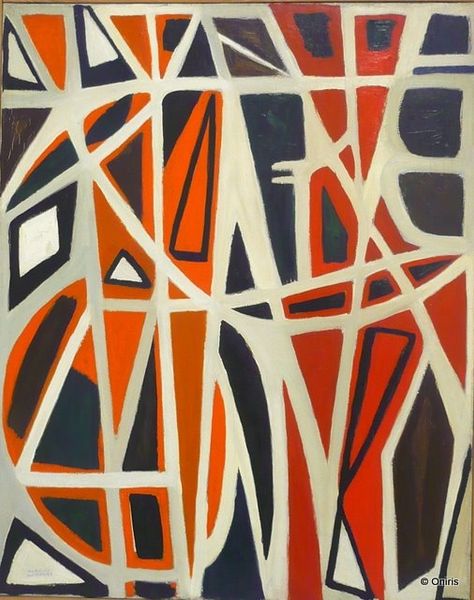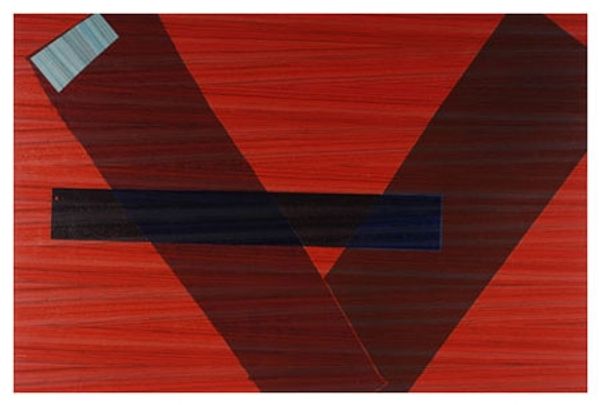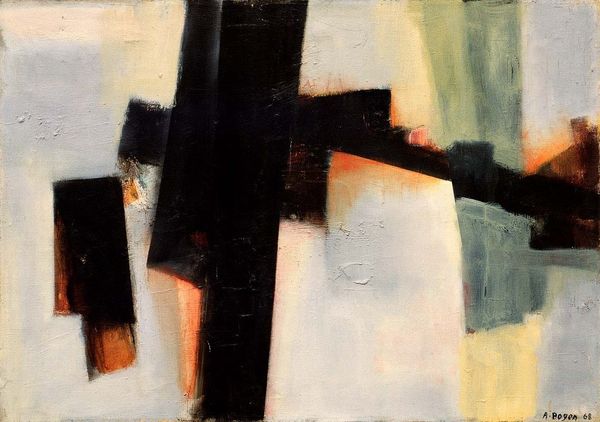
painting, acrylic-paint
#
symbol
#
painting
#
minimalism
#
acrylic-paint
#
geometric
#
abstraction
#
line
#
hard-edge-painting
Copyright: Helmut Federle,Fair Use
Curator: Welcome, everyone. Today, we're looking at Helmut Federle's "Blume des Todes III (Rotes Kreuz)" from 1989. Federle was known for his contributions to minimalism and hard-edge painting. Editor: Okay, right off the bat, that's intriguing—I’m feeling a sense of restrained tension, wouldn’t you agree? It’s almost austere, but the blunt intersection of those shapes, that stark red bar… it prevents total serenity. What are the dimensions? It’s hard to get a sense of scale just looking. Curator: The painting employs acrylic on canvas, using geometric abstraction and symbolic representation within a hard-edge style. Editor: Absolutely! Seeing a bold move like this in 1989 really makes you question. Is it industrial? A playful wink at constructivism, maybe? The simplicity almost belies a sense of controlled danger, what with the 'death flower' in the title... I suppose this pushes boundaries as well. Curator: The title does offer a layer of intrigue to Federle's practice, specifically the idea of juxtaposing a symbol of death, alongside, seemingly a version of the international symbol for humanitarian aid. It presents viewers with possible contrasting notions surrounding safety and imperilment. The symbolism also raises historical associations... Editor: Hmmm... interesting. Is the red bar intersecting with the black symbols deliberately off-center? A commentary on something? Or just a desire for perfect imbalance? There is so much thought and preparation here, yet Federle brings out that minimalist energy. It's impressive. Curator: Precisely. He engages with geometric forms in ways that question both abstraction and pictorial space itself. The very context of display also has to be considered – how does seeing a hard-edge painting change depending on who is viewing and where this piece is housed. Editor: Makes me wonder if I could recreate it. Ha! Just kidding... mostly. I find the confidence that emerges when standing before this canvas—inspiring. Well, until the death aspect gets in the way, maybe. Thanks for shining some light on this Federle today. Curator: Of course. Reflecting on this artwork, what is most evident for me, is just how context shapes interpretation, whether the socio-historical setting during its creation, the location in which it is displayed, or the audiences consuming. Editor: Definitely something to chew on.
Comments
No comments
Be the first to comment and join the conversation on the ultimate creative platform.

